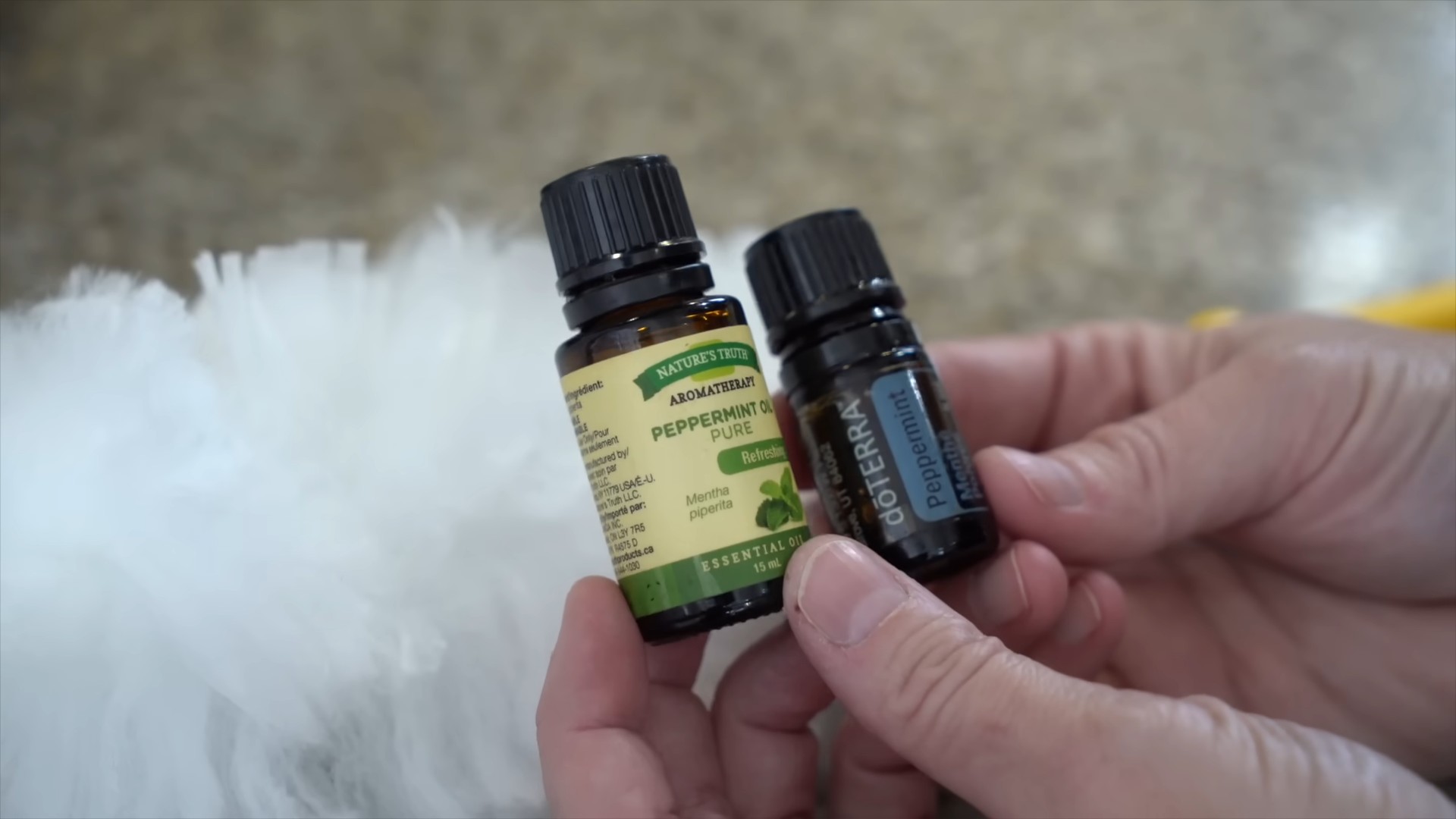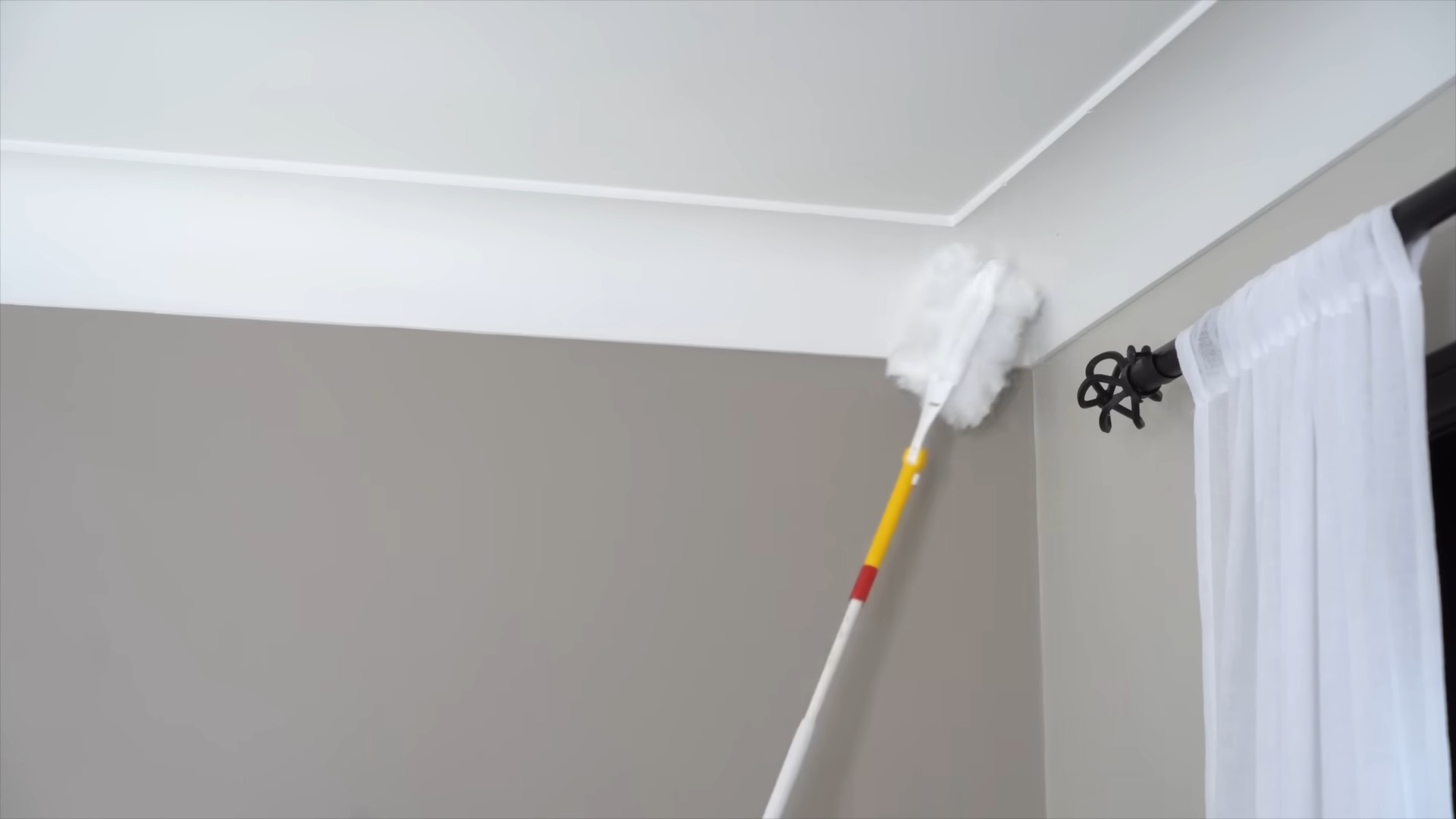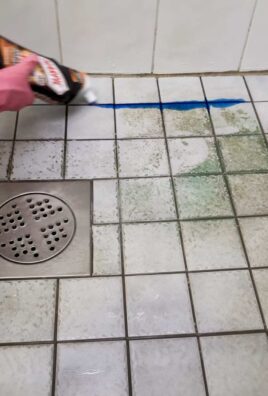Peppermint Oil Bug Repellent: Your Secret Weapon for a Pest-Free Paradise!
Tired of sharing your precious garden bounty with unwanted creepy crawlies? I know the feeling! There’s nothing more disheartening than watching your hard work become a buffet for bugs. But what if I told you there’s a simple, natural, and delightfully fragrant solution? For centuries, cultures around the globe have harnessed the power of plants to ward off pests, and today, we’re tapping into that ancient wisdom with a DIY twist.
Peppermint, with its invigorating scent, isn’t just for candy canes and teas. Its potent aroma is a natural deterrent for many common garden pests, from aphids and ants to cabbage moths and even rodents! Imagine strolling through your garden, breathing in the fresh, clean scent of peppermint, knowing that your plants are protected by a safe and effective barrier.
This isn’t just about keeping bugs away; it’s about creating a healthier, more sustainable garden. Forget harsh chemicals and complicated contraptions. This peppermint oil bug repellent is easy to make, affordable, and gentle on the environment. Plus, it smells amazing! So, let’s ditch the toxic sprays and embrace the power of nature to create a thriving, pest-free oasis right in your backyard. I’m excited to share this simple yet effective trick with you!

DIY Peppermint Oil Bug Repellent: Keep Pests Away Naturally!
Okay, so you’re tired of those pesky bugs invading your space, right? And you’re probably not thrilled about spraying harsh chemicals all over the place. I get it! That’s why I’m going to show you how to make your own super effective, all-natural peppermint oil bug repellent. It’s easy, it smells amazing, and it really works!
What Makes Peppermint Oil So Great?
Peppermint oil is a natural insecticide. Bugs like ants, spiders, mosquitoes, and even mice *hate* the smell of peppermint. It disrupts their senses and keeps them away. Plus, it’s a lot safer for you, your family, and your pets than those chemical-laden sprays.
Gathering Your Supplies
Before we dive in, let’s make sure you have everything you need. This is a pretty simple project, so the supply list is short and sweet.
* Pure Peppermint Essential Oil: This is the star of the show! Make sure you get a good quality, 100% pure peppermint essential oil for the best results. I usually buy mine online, but you can also find it at health food stores or some larger grocery stores.
* Distilled Water: Tap water can contain minerals and chemicals that might affect the potency of the repellent or clog your spray bottle. Distilled water is the way to go.
* Rubbing Alcohol (Isopropyl Alcohol) or Witch Hazel: This acts as an emulsifier, helping the peppermint oil and water mix properly. Without it, the oil will just float on top. I prefer witch hazel because it’s gentler, but rubbing alcohol works just as well.
* Spray Bottle: You’ll need a clean, empty spray bottle to hold your repellent. A dark-colored bottle is ideal because it helps protect the essential oil from light, which can degrade its quality over time. But a clear bottle will work in a pinch, just store it in a dark place.
* Measuring Spoons or Cups: For accurate measurements.
* Small Funnel (Optional): This makes it easier to pour the ingredients into the spray bottle without spilling.
Making Your Peppermint Oil Bug Repellent: Step-by-Step
Alright, let’s get down to business! Here’s how to make your own peppermint oil bug repellent:
1. Clean Your Spray Bottle: Start with a clean spray bottle to avoid contaminating your repellent. Wash it with soap and water, rinse thoroughly, and let it dry completely.
2. Add the Rubbing Alcohol or Witch Hazel: Pour 1 tablespoon of rubbing alcohol or witch hazel into the spray bottle. This is our emulsifier, remember?
3. Add the Peppermint Essential Oil: Now for the good stuff! Add 15-20 drops of pure peppermint essential oil to the spray bottle. The more drops you add, the stronger the repellent will be. I usually start with 15 drops and then add a few more if I feel like I need extra protection.
4. Add the Distilled Water: Fill the rest of the spray bottle with distilled water, leaving a little bit of space at the top.
5. Shake Well: This is super important! Screw the spray nozzle back onto the bottle and shake it vigorously for at least 30 seconds. This will help the peppermint oil, rubbing alcohol/witch hazel, and water mix together properly. You’ll need to shake the bottle before each use as well, since the oil and water will naturally separate over time.
Using Your Peppermint Oil Bug Repellent
Now that you’ve made your repellent, let’s talk about how to use it effectively.
* Test it First: Before spraying it all over your house, test it on a small, inconspicuous area to make sure it doesn’t stain or damage the surface.
* Spray Strategically: Focus on areas where bugs are likely to enter your home, such as:
* Around windows and doors
* Along baseboards
* In cracks and crevices
* Under sinks
* Near garbage cans
* Reapply Regularly: The repellent will lose its effectiveness over time, so you’ll need to reapply it every few days, or more often if you notice bugs returning. I usually reapply mine every 2-3 days, or after it rains.
* Outdoor Use: You can also use this repellent outdoors to keep bugs away from your patio, deck, or garden. Just be careful not to spray it directly on plants, as the essential oil can be harmful to some plants.
* On Your Skin (With Caution!): While peppermint oil is generally safe for topical use, it can be irritating to some people, especially those with sensitive skin. If you want to use it on your skin, dilute it even further by adding a few drops to a carrier oil like coconut oil or jojoba oil. And always do a patch test on a small area of skin before applying it to larger areas. I personally prefer to spray it on my clothes rather than directly on my skin.
* Avoid Eyes and Mouth: This should be obvious, but avoid spraying the repellent in your eyes or mouth. If you do accidentally get it in your eyes, rinse them thoroughly with water.
Troubleshooting and Tips
* The Repellent Isn’t Working: If you’re not seeing results, try adding more peppermint essential oil to the mixture. You might also need to reapply it more frequently. Make sure you’re using a high-quality, 100% pure peppermint essential oil.
* The Repellent is Staining Surfaces: If you’re worried about staining, test the repellent on a small, inconspicuous area first. You can also try diluting it further with more water.
* The Smell is Too Strong: If the peppermint scent is too overpowering, add more water to the mixture.
* Experiment with Other Essential Oils: While peppermint oil is my go-to, you can also experiment with other essential oils that are known to repel bugs, such as:
* Lavender
* Citronella
* Tea Tree
* Eucalyptus
* Lemongrass
Storing Your Peppermint Oil Bug Repellent
To keep your repellent fresh and effective, store it in a cool, dark place away from direct sunlight and heat. A dark-colored spray bottle is ideal for protecting the essential oil from light. The repellent should last for several months if stored properly.
Safety Precautions
* Keep out of reach of children and pets.
* Avoid contact with eyes and mouth.
* If you have sensitive skin, do a patch test before using the repellent on larger areas.
* Do not spray directly on plants.
* If you experience any irritation, discontinue use.
Adapting the Recipe for Different Bugs
While the basic recipe works well for a variety of pests, you can tweak it slightly to target specific bugs:
* For Ants: Focus your spraying efforts on areas where you see ants, such as along countertops, near food sources, and around cracks and crevices. You can also add a few drops of tea tree oil to the mixture, as tea tree oil is also a natural ant repellent.
* For Spiders: Spiders often hide in dark, damp places, so spray the repellent in corners, under furniture, and in closets. You can also add a few drops of cedarwood essential oil to the mixture, as cedarwood is known to repel spiders.
* For Mosquitoes: Spray the repellent on your skin (diluted with a carrier oil, as mentioned above) or clothing before going outdoors. You can also spray it around your patio or deck to create a mosquito-free zone. Citronella essential oil is a great addition to the mixture for mosquito repellent.
* For Mice: Mice hate the smell of peppermint, so spray the repellent around areas where you suspect mice are entering your home, such as along baseboards, near holes in walls, and in cabinets. Soak cotton balls in peppermint oil and place them in these areas for extra protection.
Why This is Better Than Store-Bought Repellents
Let’s be honest, those store-bought bug sprays are often loaded with chemicals that I can’t even pronounce. And who knows what those chemicals are doing to our health and the environment? This DIY peppermint oil bug repellent is a much safer and more natural alternative. You know exactly what’s in it, and you can feel good about using it around your family and pets. Plus, it smells way better than those chemical sprays!
Final Thoughts
Making your own peppermint oil bug repellent is a simple, affordable, and effective way to keep pests away naturally. It’s a win-win for you, your family, and the environment. So, ditch those harsh chemicals and give this DIY repellent a try. You won’t be disappointed! And remember to always shake well before each use! Happy bug-free living!

Conclusion
So, there you have it! Crafting your own Peppermint Oil Bug Repellent is not only incredibly simple and cost-effective, but it’s also a fantastic way to ditch those harsh chemicals and embrace a more natural approach to pest control. We’ve walked you through the easy steps, highlighting the potent power of peppermint oil in keeping those pesky insects at bay.
Why is this DIY trick a must-try? Because it’s a win-win! You get a highly effective bug repellent without exposing yourself, your family, or your pets to potentially harmful synthetic ingredients. Think about it: no more lingering chemical smells, no more worrying about skin irritation, and no more contributing to environmental pollution. Plus, the refreshing scent of peppermint is a welcome bonus – a far cry from the acrid odor of commercial bug sprays.
But the beauty of this DIY project lies in its adaptability. Feel free to experiment with variations to suit your specific needs and preferences. For instance, if you’re dealing with particularly persistent mosquitoes, consider adding a few drops of citronella or eucalyptus oil to your blend. These essential oils are also known for their insect-repelling properties and can significantly boost the effectiveness of your Peppermint Oil Bug Repellent.
Another variation you might want to explore is the carrier oil. While water works perfectly well for a quick and easy spray, using a carrier oil like witch hazel or fractionated coconut oil can create a longer-lasting repellent. These oils help the essential oils adhere to your skin for a more extended period, providing prolonged protection against bugs. Just remember to test a small area of your skin first to ensure you don’t have any adverse reactions to the carrier oil.
You can also customize the strength of your repellent by adjusting the concentration of peppermint oil. If you have sensitive skin, start with a lower concentration and gradually increase it until you find the perfect balance between effectiveness and comfort. Remember, a little goes a long way with essential oils!
Beyond personal use, this DIY repellent is also great for protecting your outdoor spaces. Spray it around your patio, deck, or garden to create a bug-free zone where you can relax and enjoy the outdoors without being constantly bothered by insects. Just be mindful of spraying it directly on plants, as some plants may be sensitive to essential oils.
We are confident that once you try this simple yet effective Peppermint Oil Bug Repellent, you’ll never go back to store-bought sprays. It’s a natural, affordable, and customizable solution that puts you in control of your pest control.
So, what are you waiting for? Gather your ingredients, follow the easy steps, and experience the difference for yourself. And most importantly, we want to hear about your experience! Share your tips, variations, and success stories in the comments below. Let’s build a community of natural bug-repelling enthusiasts and help each other enjoy the great outdoors, bug-free! We encourage you to share this recipe with your friends and family so they can also benefit from this natural and effective solution. Let’s spread the word about the power of peppermint oil!
Frequently Asked Questions (FAQ)
1. How does peppermint oil actually repel bugs?
Peppermint oil contains a high concentration of menthol, a natural compound that insects find highly irritating. The strong scent of menthol disrupts their ability to locate food sources and navigate their environment, effectively driving them away. It essentially overloads their sensory system, making them want to avoid the area where the peppermint oil is present. This makes Peppermint Oil Bug Repellent a great choice.
2. Is peppermint oil safe to use on my skin?
Generally, peppermint oil is safe for topical use when properly diluted. However, it’s crucial to perform a patch test before applying it liberally to your skin. Apply a small amount of the diluted repellent to a discreet area, such as your inner arm, and wait 24 hours to check for any adverse reactions like redness, itching, or irritation. If you experience any of these symptoms, discontinue use immediately. Also, avoid applying peppermint oil to broken or irritated skin.
3. Can I use peppermint oil bug repellent on my pets?
While peppermint oil is generally considered safe for humans when diluted, it’s important to exercise caution when using it around pets, especially cats. Cats are particularly sensitive to essential oils, and some can be toxic to them. If you choose to use peppermint oil around your pets, ensure it’s highly diluted and avoid direct contact with their skin or fur. Monitor your pet for any signs of distress, such as drooling, vomiting, or difficulty breathing, and discontinue use if you notice any of these symptoms. It’s always best to consult with your veterinarian before using any essential oils on or around your pets.
4. How often should I reapply the peppermint oil bug repellent?
The frequency of reapplication will depend on several factors, including the weather conditions, your activity level, and the severity of the bug infestation. As a general rule, reapply the repellent every 2-3 hours, or more frequently if you’re sweating heavily or swimming. You may also need to reapply it after being exposed to rain or water. Pay attention to how your skin feels and how effective the repellent is in keeping bugs away. If you notice that the bugs are starting to bother you again, it’s time to reapply.
5. Can I use peppermint extract instead of peppermint essential oil?
No, peppermint extract is not a suitable substitute for peppermint essential oil in this recipe. Peppermint extract is a flavoring agent that contains a very low concentration of peppermint oil, typically diluted in alcohol and water. It lacks the potent insect-repelling properties of pure peppermint essential oil. To achieve the desired effect, you must use genuine peppermint essential oil.
6. How should I store my homemade peppermint oil bug repellent?
Store your homemade peppermint oil bug repellent in a cool, dark place away from direct sunlight and heat. This will help to preserve the potency of the essential oil and prevent it from degrading. A glass spray bottle is ideal for storage, as essential oils can sometimes react with plastic. Make sure the bottle is tightly sealed to prevent evaporation. Properly stored, your repellent should last for several months.
7. Is this repellent effective against all types of bugs?
While peppermint oil is effective against a wide range of insects, including mosquitoes, flies, ants, and spiders, its effectiveness may vary depending on the specific bug species and the severity of the infestation. Some bugs may be more resistant to peppermint oil than others. For particularly stubborn infestations, you may need to combine peppermint oil with other natural repellents, such as citronella, eucalyptus, or lavender oil.
8. Can I use this repellent on my clothes?
Yes, you can spray this repellent on your clothes, but it’s always a good idea to test it on a small, inconspicuous area first to ensure it doesn’t stain or damage the fabric. Avoid spraying it on delicate fabrics like silk or rayon. When spraying your clothes, hold the bottle about 6-8 inches away and apply a light, even mist. Allow the repellent to dry completely before wearing the clothes.
9. What if I accidentally get peppermint oil in my eyes?
If you accidentally get peppermint oil in your eyes, flush them immediately with plenty of cool water for at least 15 minutes. If irritation persists, seek medical attention. Avoid rubbing your eyes, as this can worsen the irritation.
10. Where can I buy peppermint essential oil?
Peppermint essential oil is widely available at health food stores, natural product retailers, and online. When purchasing peppermint essential oil, look for a high-quality, 100% pure essential oil from a reputable brand. Avoid oils that are diluted with carrier oils or contain synthetic fragrances. Reading reviews and researching the brand can help you ensure you’re getting a genuine and effective product.




Leave a Comment